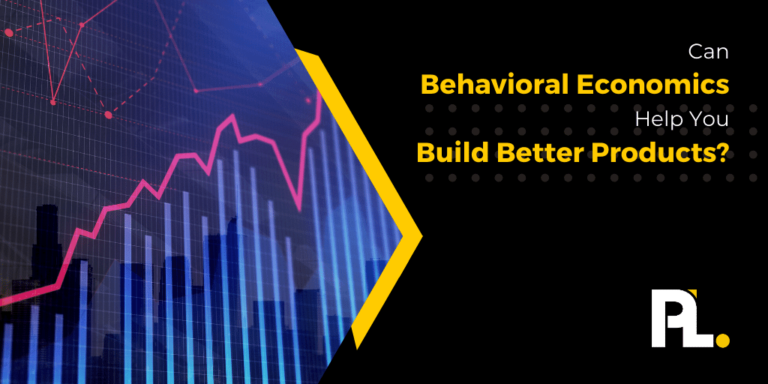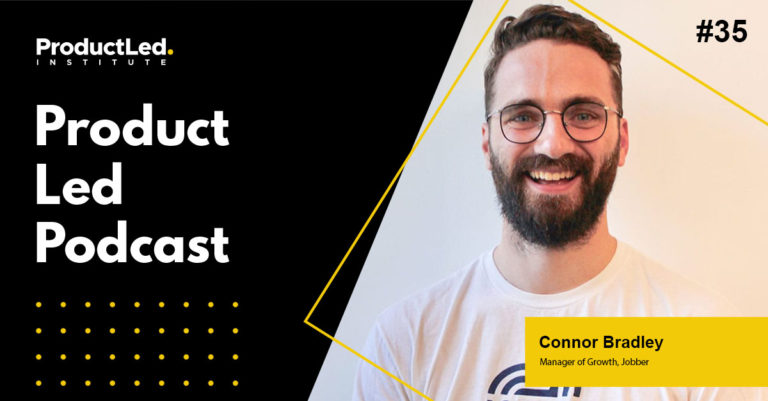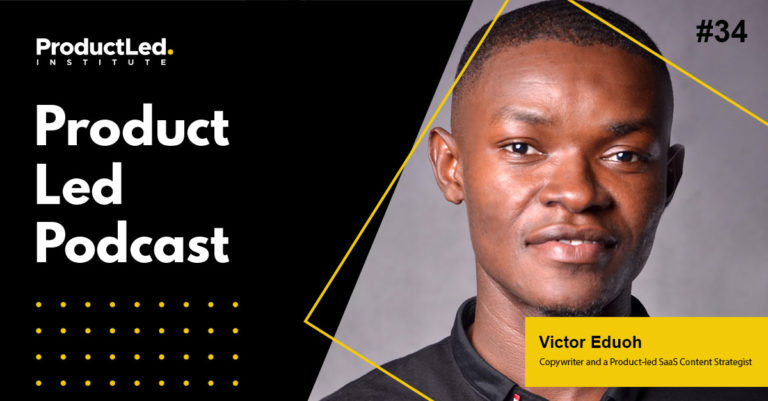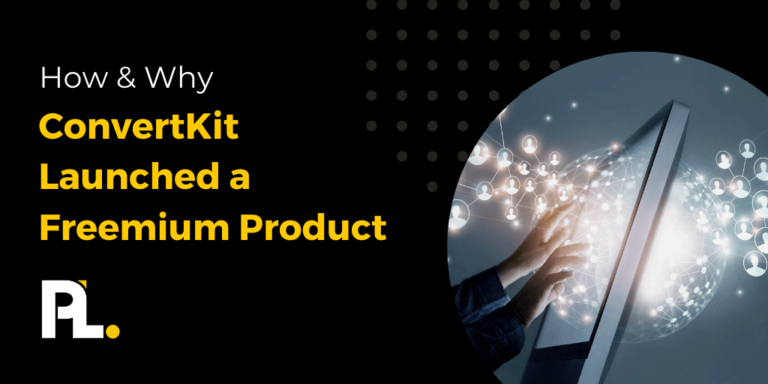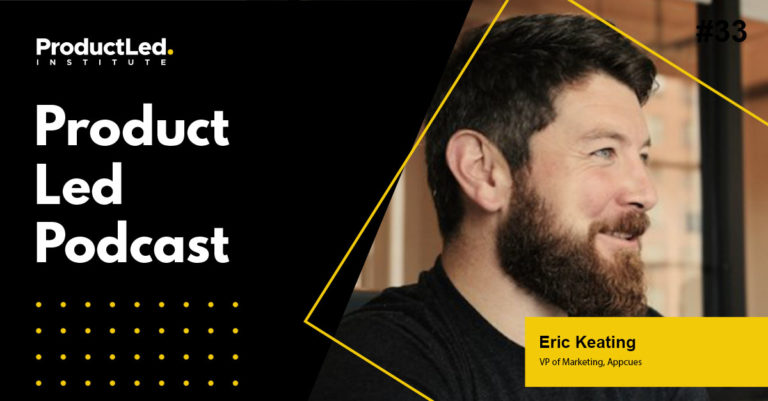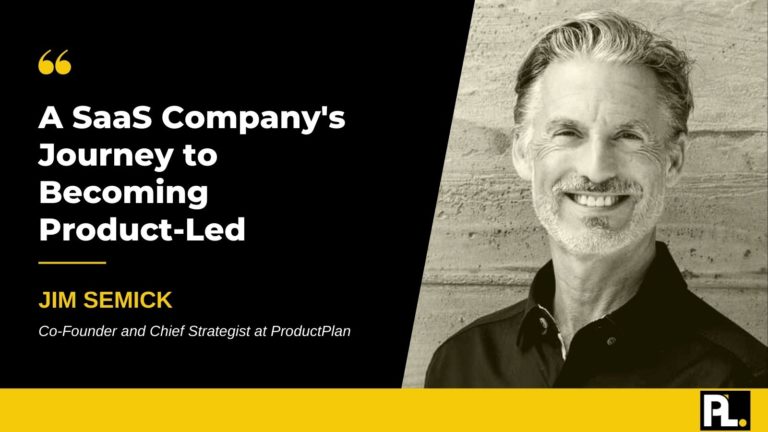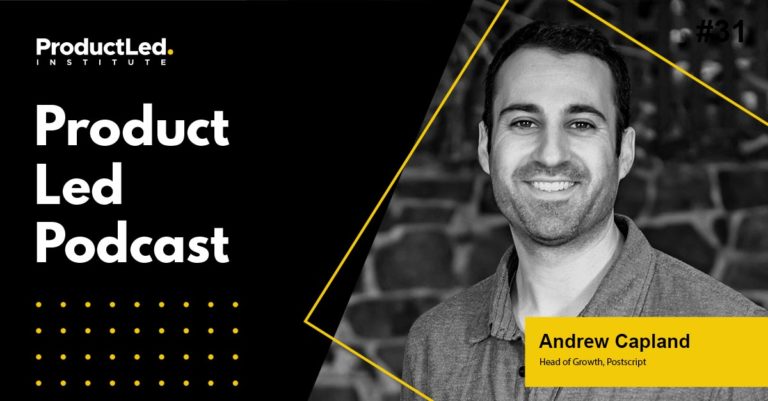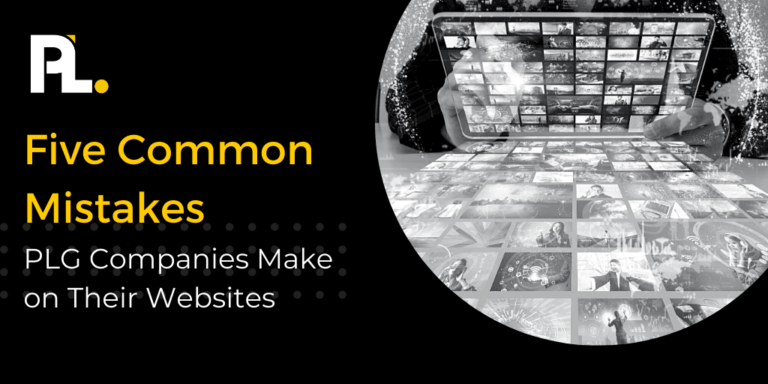The Product-Led Growth Flywheel is a framework for growing your SaaS business by investing in a product-led user experience. Companies are transforming how they communicate with users by leading with the product rather than marketing or sales.
Unlike the sales funnel, the flywheel model builds momentum from one phase to the next, rather than leaking customers along the way.
In this video and blog post, I show you how you can use this flywheel model to align your entire company around customer success. You'll also discover the key actions that users need to take to graduate to the next stage of the customer journey.
There's a huge change in the world: the way users want to buy software has changed dramatically, and we need to respond. This movement towards product-led growth means that SaaS companies rely on their product to drive engagement, reach, and revenue.
What is The Product-Led Growth Flywheel?
My team at Appcues interviewed nearly 100 SaaS companies to help create and validate The Product-Led Growth Flywheel. During this process, we discovered that many companies wanted to improve product experience.
Not only that, but multiple departments within those companies were actively searching for ways to meet user expectations through the product. Top performers are re-thinking their approach to customer acquisition, in an effort to deliver a high-quality, primarily self-service customer experience.
The companies we talked to are segmenting their users differently within the product led growth model. Therefore, the product team is focusing on the goals that will drive user adoption.
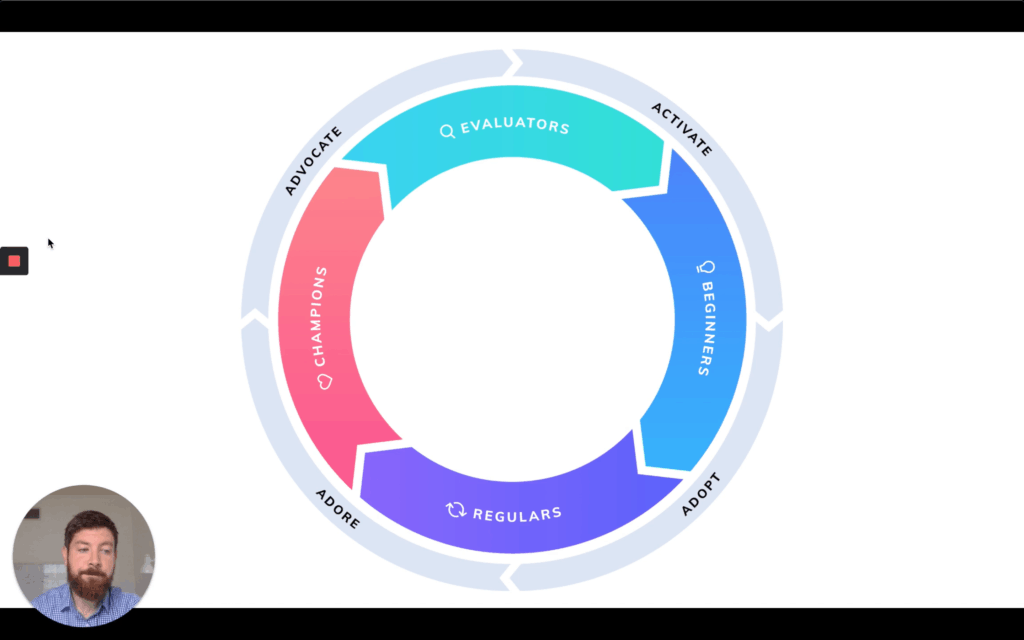
The inner circle of the flywheel consists of four user segments that correlate with the marketing phases from awareness to evangelism:
- Evaluators
- Beginners
- Regulars
- Champions
The outside ring of the flywheel corresponds to the users' actions to graduate to the next stage of user acquisition, consisting of four categories:
- Activate
- Adopt
- Adore
- Advocate
Now, let's take a closer look at each of the four user segments within the flywheel:
Evaluators
Evaluators are at the earliest stage of the user journey. They are browsing everything that your product has to offer. And, they're cautiously excited about how it can potentially help solve their problem. Evaluators are likely to have heard about your product from a friend, colleague, or through your company's marketing efforts. Either way, they are ready to confirm that your product will deliver the value they were promised it would.
If you have a low-cost, free trial, or freemium tier, your customer is probably trying out more than one SaaS product to see which will be the best fit.
Evaluators are usually:
- In a trial or demo phase
- Not installed or using real data
- Not using your product in their existing workflows
- Still searching for a SaaS solution to a problem they are trying to solve
Evaluators want to know that you understand their problem. They're asking if you can offer them a clear path to solving it. They don't care about the nuances of your product, or how many uses cases it can address. Their only concern is whether your solution meets their needs.
What are the trade-offs between your product and your competitors'? Can they build it in-house? Your competitive advantage lies in ease of use, core functionality, and unique features.
Guide Evaluators to their "aha moment"
Evaluators are searching for value. So it needs to be easy for them to find it. Let evaluators experience your product in action. They need a basic understanding of its core functionality. Don't drag them through an exhaustive tour of every single feature.
Assume they have zero experience, but have a firm goal in mind. Use your product onboarding experience to gather info about those goals and guide them toward the features that will help them reach those goals.
That's the "aha moment."
Evaluators need a map to initial success, not an advanced user manual or tutorial. Be ready to help them when they want to dive deeper. In-product support, walkthroughs, and your help center can be overwhelming. Be sure that users don't get buried in the details.
Keep them focused on solving the initial problem they came to you to solve.
What does Activation look like?
Activation is different for every company. At its core, it's that moment of relief or excitement when the user discovers the solution to their problem.
Entering a credit card or signing a purchase order isn't necessary to activate. In fact, it's common for a SaaS company to have many paying customers who never activate. They will probably become "churned" customers in a few months.
Activation only happens when a user sees and understands your product's value. They want to learn more about your product. They're willing to invest time and money, because they've seen the software can be an asset to improve their professional or personal life.
To drive users to activate, you must key in on actions users take in the product. Find the moments that trigger activation. You can source this information from product analytics data, user testing, and customer interviews.
Once you've pinpointed the activation events, your goal is to help users get value as soon as possible. Reduce the time it takes for users to find value in your product. Because the longer it takes, the more likely they are to jump ship and seek alternative solutions.
Beginners
The next stage in the users journey is when evaluators become beginners. Beginners understand the value your product provides and are excited about it. Due to this excitement, they spend time exploring your product and using its features. They develop a deeper understanding of your product and how to use it effectively. They may not be paying customers at this stage, but they're ready to make the leap.
Beginners are usually:
- Incorporating your product into their workflows
- Starting to use real data and receiving tangible value
- Not using advanced functionality or implementing sophisticated use cases
- Feeling confident that your product is the best solution to solve their problem
Beginners are starting to demonstrate signs of commitment. They're eager to learn more and discover additional benefits beyond the ones they realized initially. Beginners want to integrate your product into their tech stack and figure out workarounds for their edge cases. Pretty soon, Beginners will want to see ROI.
Learning how to use your product effectively and become great users is top of mind for Beginners. You will want to give them some extra support in this stage with guidance, tours, and tips.
Remember that Beginners are trying to get stuff done. Give them the freedom to do what they need to do, and reduce any possible friction. They'll need easy-to-access guidance.
During this stage, focus on helping users build on the foundational knowledge they achieved as Evaluators. A strong PLG strategy helps Beginners discover additional benefits and features that could make their workflow more efficient and lead to greater customer success. Beginners are working your product into their day-to-day.
The goal is to get users to adopt your product through habitual, more advanced usage.
How to drive users to adopt
Adoption is about forming habits and getting users to associate your product with a specific task or solution. Users who have adopted your product use your product without thinking about it.
Take Slack, for example. If you've adopted Slack, your first instinct when communicating with a team member is to open the app and send a message. Despite having many other channels available, the habit is there to default to Slack when you need to send a message.
Product adoption means full buy-in. It's when a user understands the power of the product and depends on it regularly.
Regulars
Once a user has adopted a product, they're considered a Regular. They are the bread and butter of your user base. If your product was a coffee shop, the Regulars would be the ones whose orders are ready as soon as they walk in the door, because the baristas know they come in at the same time and order the same thing every day. They carry the loyalty card, they know where the stirrers and straws are kept.
Engagement is high with Regulars, and they rely on your product for multiple use cases. Even though their excitement may have waned, they know your product is key to achieving their goals and is part of their routine.
Switching to a different solution would be very costly for Regulars. They've invested time, effort, and money and have developed a habit. Changing their habit would be hard at this point, which is great news for a product manager.
Regulars are masters at the core uses cases for your product, and they're curious about other problems your product can solve. They're very familiar with your interface and are unlikely to need much from your customer success team.
Be mindful that any changes in your product will cause friction and disrupt their workflows.
Regulars are usually:
- Logging in on a regular basis
- Using your product to complete core parts of their job
- Defaulting to your product as a possible solution when new problems arise
- Exploring deeper layers of your product to see what else your product can help them do
As frequent users, they want to enjoy using your product, and are easily frustrated by friction. Since your product is fully integrated into their workflows, there's tangible business impact for a Regular customer when the product breaks, or even redesigned.
Regulars are often searching for new ways to get value from your product, either by adopting new uses cases or finding efficiencies to save time on existing tasks. Advanced features are of great interest to a Regular customer so they can extract more value.
Whether your product can grow with them is very important to Regulars. They have opinions about new directions, integrations, and features and are a valuable resource for feedback.
Be proactive and deliver value to Regulars. They still need your attention when they get tripped up or perform a task they don't do often. They should have opt-in access to the same level of support you would give an onboarding customer.
Remember to keep the help unobtrusive and not interfere with their workflow.
You can keep Regulars excited about your product by reminding them how important they are to you. Offer them exclusive looks at new features, spend time gathering and understanding feedback, and follow up to let them know how you used their feedback to improve the product.
Educational content is valuable for Regulars. High-value content like best practices showcases, user success case studies, and deep dives into advanced features are extremely engaging.
Strike a balance between checking in to continue providing a delightful product experience, and bombarding them with too much communication. The goal is more than just habitual usage, it's become emotional. To move a user through the flywheel model, you need them to adore your product.
How to drive users to adore your product
Getting users to adore your product can be tricky. People who adore your product don't just use it frequently, the enjoy using it. They look forward to accomplishing their tasks and seek out additional use cases within your product.
Once a user adores your product, they may take it in unexpected directions. They are passionate, push the limits, and further ingrain the software into their workflows.
These are the people eager to provide feedback, and you want to consult them about near and long-term roadmaps for your product led company.
You need to provide a consistently delightful experience, within the product and with your customer success team. This is a two-way relationship between the customer and the company where both sides are giving and receiving value.
Once users start to adore your product, they become Champions.
Champions
This is the final segment of the flywheel model. Champions want more capabilities and power from your product, not just because they require it, but because they're actively invested in your success.
If you shut your doors tomorrow, Champions would be devastated.
Champions recommend your product to everyone. They have an emotional connection with your brand. You provide value outside of the job-to-be-done.
They may still require customer support, but it's because they're pushing your product to its limit. They're trying out advanced use cases that require a depth of knowledge that some of your employees might not even have.
Champions are usually:
- Actively participating in the future of your product
- Pushing the limits of your product with new use cases
- NPS promoters
- Wearing your brand's t-shirt
Champions enjoy feeling like a partner and a friend to your business, and they want to actively participate in your future. They have a high level of engagement and a lot of pride in the work they do in your product. Champions appreciate recognition.
Look to Champions to participate in case studies, try new features, and provide feedback. Champions think your product is special and are happy to leave glowing reviews and provide references for potential customers.
To deliver value to Champions, let them know the feeling is mutual. You should definitely have a two-way relationship. Offer them swag, advanced guidance, power use case features and first dibs at beta versions. And you've earned the right to ask for something in return.
If you start a customer advisory board, invite your Champions. Champions should feel special.
The goal at this point is for your Champions to start advocating for your product.
How to drive users to become advocates
Advocacy is what creates the flywheel effect in the model. Inviting other users, evangelizing internally and externally, and leaving reviews drives awareness and new Evaluator interest in your product.
It completes the cycle and compounds product-led growth.
You can move Champions to advocacy with just a little nudge. They love your product and want to see it succeed, but they may not know what to do on their own. Give them an invitation, as it may make them feel special to be asked.
Advocacy might be a private conversation between the user and your team. Champions might advocate for new features and creative solutions to a roadblock they're facing. They do so because they're invested in the maturation of your product and want to see it evolve with their needs.
Third party reviews and case studies from successful users of your product are very powerful social proof and are a key product led growth strategy.
When your Champions advocate for their own needs, it will move your product in new directions to stay ahead of the market.
Why use The Product Led Growth Flywheel?
Using this framework creates cross-team alignment. It's essential for each team to contribute to a product led growth company.
Sales and marketing typically own the Evaluator stage, sometimes with the help of someone from a Growth team. In the Beginner stage, product and customer success take the lead, focusing on product adoption. All of the teams have a role to play to move users into Regular and then Champion stages.
The flywheel creates a shared language to discuss ongoing efforts to discuss product-led growth. It's also a more powerful sales cycle than the funnel, because Champions become advocates who share your product with new Evaluators, starting the cycle over again and again, compounding your growth.

